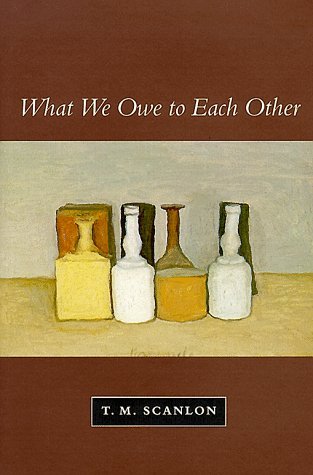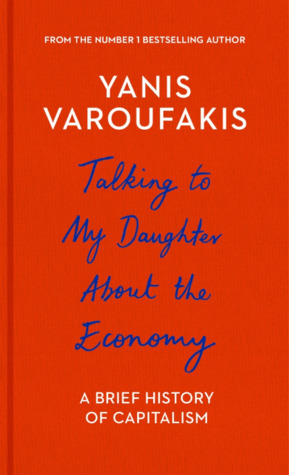NEW TITLES ADDED ALMOST DAILY
WHAT WE OWE TO EACH OTHER (T.M SCANLON)

How do we judge whether an action is morally right or wrong? If an action is wrong, what reason does that give us not to do it? Why should we give such reasons priority over our other concerns and values?
TALKING TO MY DAUGHTER ABOUT THE ECONOMY, A BRIEF HISTORY OF CAPITALISM (YANIS VAROUFAKIS)

In Talking to My Daughter About the Economy, activist Yanis Varoufakis, Greece’s former finance minister and the author of the international bestseller Adults in the Room, pens a series of letters to his young daughter, educating her about the business, politics, and corruption of world economics.
A PLACE AT THE ALTAR (MEGHAN J. DILUZIO)

A Place at the Altar illuminates a previously underappreciated dimension of religion in ancient Rome: the role of priestesses in civic cult.
EDUCATED: A MEMOIR (TARA WESTOVER)

Educated is an account of the struggle for self-invention. It is a tale of fierce family loyalty and of the grief that comes with severing the closest of ties. With the acute insight that distinguishes all great writers, Westover has crafted a universal coming-of-age story that gets to the heart of what an education is and what it offers: the perspective to see one’s life through new eyes and the will to change it
WHY DO HUMANS VIEW THEMSELVES AS SUPERIOR TO NATURE (ARTICLE)

Historically, whenever humans and animals are brought into the same context humans have been known to separate themselves as superior over animals (Williams, 1959). Thus the present relationship that exists between humans and the wilderness can be linked to historical background. This relationship could be innate, or it could be from the myriad of human cultures. Humanity has long been defined by its cultures (Clark, 2002; Gibson, 2002). Therefore we believe that we can understand this fundamental question by looking at the history of humanity and seeing its links to present-day cultures as relates to the wilderness. We will look at culture mainly from religious, education levels, and social and economic class perspectives.
WHEN WOMEN KILL (BELINDA MORRISEY)

Why are we so reluctant to believe that women can mean to kill? Based on case-studies from the US, UK, and Australia, this book looks at the ways in which female killers are constructed in the media, in law, and in feminist discourse almost invariably as victims rather than actors in the crimes they commit.
HOW POLES BECAME WHITE (C.T. JASPER)

“We’re not people, we’re just negroes.”
This surprising phrase was recorded by the anthropologist Elizabeth Dunn during her fieldwork in the industrial town of Rzeszów in 1997. Murzyn—a common and often derogatory Polish word for a person of color, which Dunn rendered as “negro”—must have seemed to the Polish factory workers like an acceptable synonym for “nobody,” as they were “unaware how shocking such racist terminology was to a North American listener.” According to Dunn, the factory worker “did not mean to be as pejorative as the English term suggests,” but rather express the feeling that “the firm considered line workers to be ‘slaves’ or ‘unpersons’ in an abstract sense.” In Poland, Dunn argued, “race and ethnicity are completely naturalized.”
THE DOG OF POMPEII (LUIS UNTERMEYER)

In the short story “The Dog of Pompeii,” you’ll meet Tito, a boy who is blind, and
his faithful dog Bimbo. Both characters live in ancient Pompeii, the Roman city that was buried by the eruption of Mount Vesuvius in A.D. 79.
TUESDAY OF THE OTHER JUNE (NORMA MAZER)

Tuesday’s mean swimming class, and swimming class means facing June. The other June.
A short story about overcoming bullying.

Angel in search of the absolute? Bloodthirsty monster? Before the war, Albert Camus conceives of Caligula, as well as Sisyphus or Meursault (The Stranger), as a hero of the Absurd. In 1945, the play was received as a fable about the horrors of Nazism. His versions and his successive productions, the evolution of the public’s sensibility have contributed to making Caligula one of the most disturbing figures in theater. The image of the tyrant is superimposed in our memory, the faces of Gérard Philipe, who created the role, and that of Albert Camus, who always mixed the need for tenderness and the demand for purity with a strange “fixation on the murder ”and“ this interior violence ” which animates his Roman emperor.
